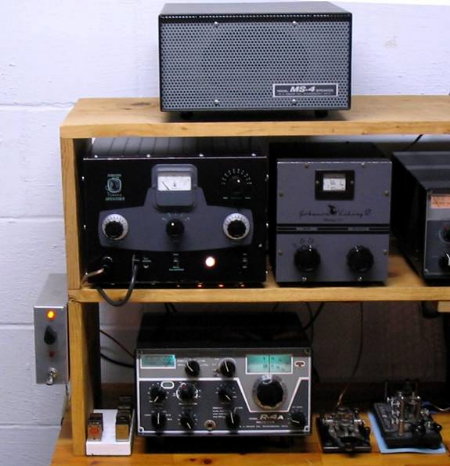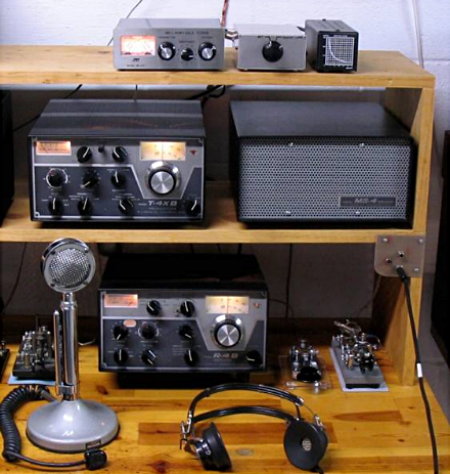One of the most fascinating things about vintage equipment is that to us "old-timers" most of it "looks like" radio equipment is "supposed" to look. I realize that this is a matter of generational perspective and it's not a really strong argument for sinking centabucks or kilobucks into something that's fifty years old (and sometimes much older), but there is a definite mindset as illustrated in the following personal story.
Back in the mid-1970s I was helping avid fellow VHFer Bill Shaw, WA4MMP (SK), align his Clegg Venus 6-meter transceiver, a 40-watt masterpiece of SSB/CW tube technology sporting an Eddystone dial on the front panel. After we finished the alignment - the Venus was still out of its cabinet and sitting on its side, the meticulously hand-wired chassis and vacuum tubes plainly visible - I noticed a Drake TR-22, a very compact, solid-state 2-meter FM rig. When I commented on it Bill replied, "Yep, it's a great little rig, very convenient for me to carry in the car, a wonderful communications package.. I suppose that it's the way of the future, but to me THIS" - and he pointed to the Venus - "THIS is a RADIO!"
Currently I have a dual-position vintage HF station as shown in the photo. The left half is 1950s-60s technology with a Johnson Viking Adventurer 50w CW transmitter, Johnson Viking 122 VFO, and Drake R-4A receiver & MS-4 speaker. The right half, 1960s-70s technology, is a Drake "4B line" consisting of an R-4B receiver, T-4XB CW/SSB/AM transmitter, MS-4 speaker and AC-4 power supply. Each station has its own key & bug and the right-hand station includes a vintage D104 microphone and modern antenna coupler for matching the T-4XB. There are some unique requirements as described in more detail below.

K4MSG's Dual HF Vintage Stations



